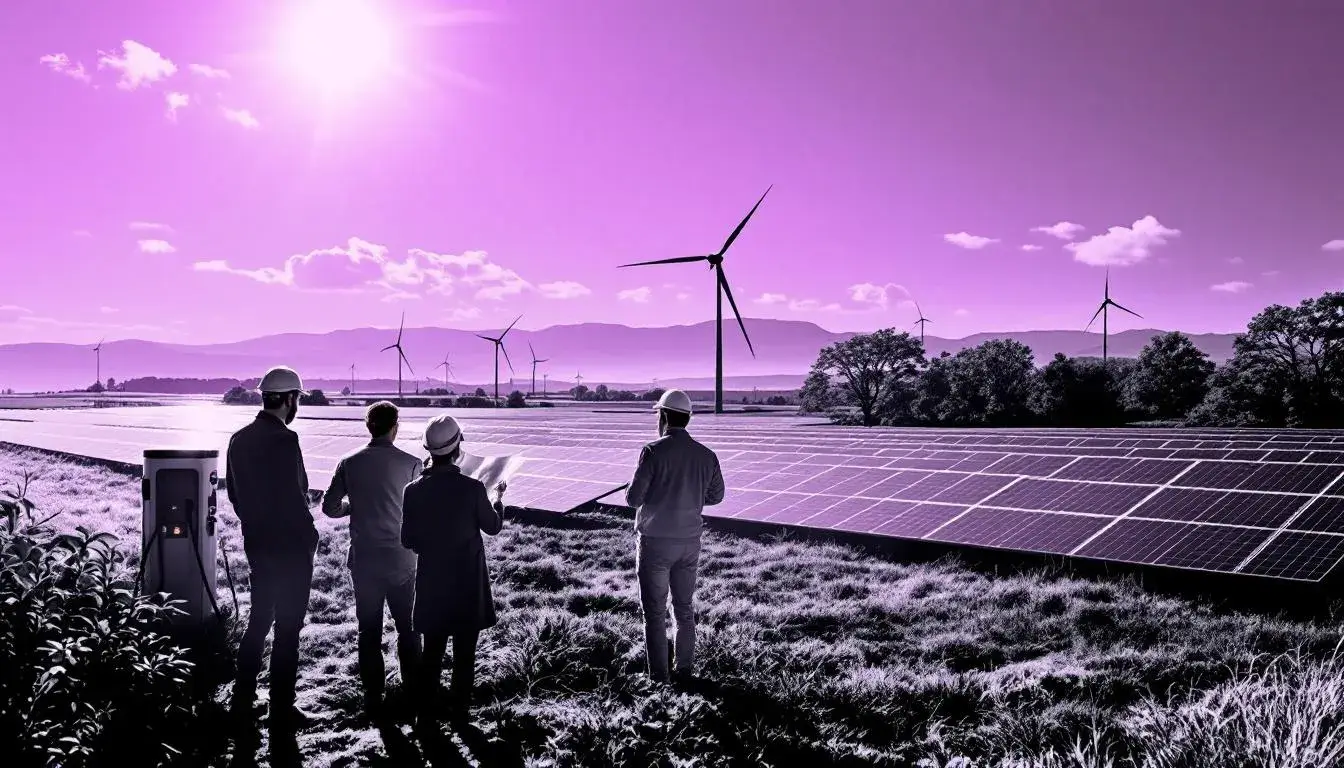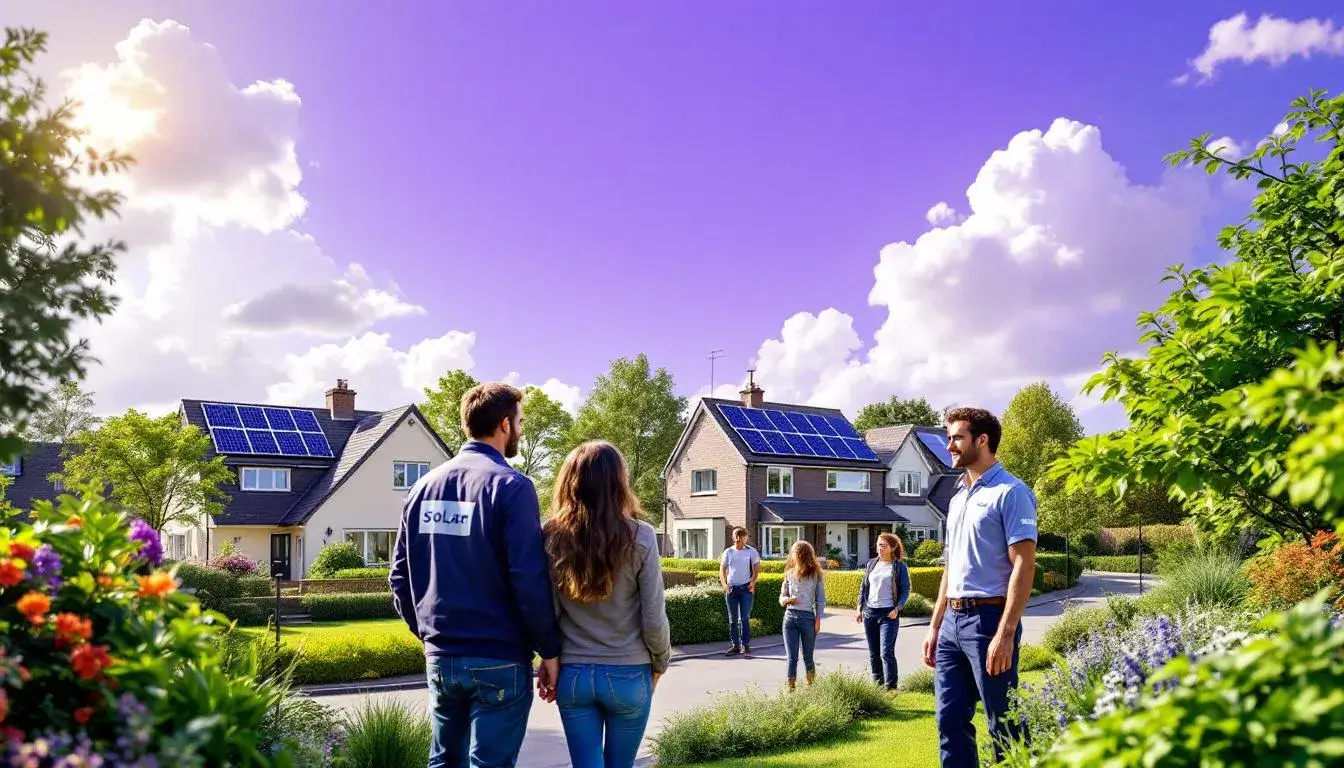
Finance for Solar & Renewables

The UK solar moment and how to fund it
Solar is not a future bet. It is a present-tense asset class reshaping Britain’s energy mix, bills, and balance sheets. In the 12 months to Q2 2025, planning approvals for solar PV reached 4,831 MW across 662 projects, with average project size rising 40% to 7 MW. This is one of the strongest approval periods in 16 years, pointing to falling costs, investor confidence, and a maturing market. Output tells the same story: from January to May 2025, UK solar generated 7.6 TWh of electricity, up 42% on the previous year and 260% over the decade, supported by a record-bright spring and total capacity of roughly 20.2 GW by end-2024. Government intent is equally clear. The Clean Power 2030 plan targets 45 to 47 GW of solar by 2030 with £1.5 billion a year in support, creating long-term certainty for homes and businesses.
Renewables met over 55% of UK electricity demand in Q2 2025, with more than 80,000 new rooftop systems installed in the first half of the year. Public support for solar sits near 80%. Regional adoption is uneven, but the South East leads with over 215,000 installations, signalling strong consumer and commercial appetite. By mid-2025, the UK had already added more than 2 GWp of solar, approaching the whole of 2024’s total.
Understanding APR is only part of the picture. You also need to model real cash flows, tax treatment, and payback under different generation and tariff scenarios. With finance, the right structure should align repayments to savings or revenues without compromising resilience. Whether you are a homeowner adding rooftop PV and a battery, or a business pursuing roof or ground-mount, the market now offers a diverse toolkit to fund systems that cut bills, hedge energy risk, and enhance sustainability credentials.
Solar is becoming a cornerstone of UK energy - financing it well safeguards your returns.
Who benefits most
This guide suits UK homeowners seeking to stabilise energy costs, improve EPC ratings, and participate in the Smart Export Guarantee without overextending savings. It also serves SMEs, landlords, farms, and community groups aiming to reduce operating expenses, secure predictable energy costs, and demonstrate credible decarbonisation progress to customers and lenders. For corporates and public sector bodies, it covers options that preserve capital, protect covenants, and manage off-balance-sheet considerations. If you are weighing project timing, equipment quality, or the right mix of panels, inverters, and storage, you will find funding paths that match varying risk appetites and time horizons.
Ways to fund your project
Unsecured personal loan - fixed terms for homeowners buying PV and batteries.
Secured homeowner loan - larger borrowing using property as collateral.
Business asset finance - HP or lease for commercial rooftop or yard arrays.
Power Purchase Agreement (PPA) - third party funds, you buy electricity.
Operating lease - off-balance-sheet style use with predictable rentals.
Hire purchase - own the system after final payment, with capital allowances.
Green mortgage top-up - preferential rates for energy upgrades.
Community share raise - local investors fund shared solar assets.
What it costs, what it saves, and key risks
| Option | Typical cost or APR | Impact on bills | Payback or term | Key risks |
|---|---|---|---|---|
| Unsecured personal loan | Fixed APR, often 6% to 12% | Medium to high savings if sized well | 2 to 7 years | Credit score sensitivity, rate variability across lenders |
| Secured homeowner loan | Lower APR than unsecured | Higher savings with battery optimisation | 5 to 15 years | Property security, early repayment charges |
| Business asset finance | Facility margin plus fees | Material OPEX reduction, SEG or onsite use | 3 to 7 years | Covenant limits, service downtime affecting yield |
| PPA | No capex, fixed or indexed p/kWh | Savings vs grid tariff from day one | 10 to 25 years | Contract lock-in, change of tenancy considerations |
| Operating lease | Rental payments deductible | Savings offset rentals, preserves cash | 5 to 10 years | Residual value, end-of-term options |
| Hire purchase | Interest plus capital | Ownership and capital allowances benefits | 3 to 7 years | Balance sheet impact, maintenance discipline |
| Green mortgage | Preferential rate uplift | Bill savings plus property value uplift | Mortgage term | Valuation hurdles, lender criteria |
| Community raise | Dividend or interest to investors | Local tariff gains, resilience benefits | 5 to 20 years | Fundraising risk, governance overhead |
Who is likely to qualify
Lenders assess affordability, credit history, and project quality. Homeowners typically need a UK address, stable income, and an installer using MCS-certified kit. Planning permission is usually not required for domestic rooftops, but listed buildings and certain zones may need approvals. For larger systems, especially in England and Wales where capacity growth is concentrated, securing planning and grid connection is critical as project sizes expand. Businesses should expect to provide financial statements, trading history, and details of roof rights or land ownership. Export income through the Smart Export Guarantee may be included in projections but is rarely guaranteed by lenders. Where it fits your circumstances, Kandoo can introduce you to a panel of finance providers so you can compare representative APRs, terms, and any fees side by side. Tenants generally need landlord consent; lease terms should allow installation, access, and long service life.
From application to switched-on - the sequence
Define goals, load profile, and roof or land suitability.
Get MCS-grade designs, yields, and fixed quotes.
Choose finance route aligned to savings profile.
Submit application with documents and credit checks.
Receive approval in principle and confirm conditions.
Sign agreements and schedule installation dates.
Install, commission, meter, and register for SEG.
Monitor performance and optimise battery settings.
Weighing the upsides and trade-offs
| Pros | Cons |
|---|---|
| Lower and more predictable energy costs | Upfront or ongoing finance costs |
| Hedge against rising grid prices | Performance depends on site and weather |
| Potential property value uplift | Maintenance and inverter replacement costs |
| Tax and capital allowance benefits for businesses | Contract complexity for PPAs and leases |
| Supports net zero goals and credentials | Planning or grid constraints on larger sites |
What to check before you sign
Model conservative scenarios. Stress test with lower generation than forecast and modest export tariffs. Ensure the repayment profile does not exceed expected bill savings during winter when generation dips. Review equipment warranties, installer accreditation, and O&M provisions, especially inverter replacement around years 8 to 12. For PPAs and leases, examine indexation, termination, change-of-control, and roof reinstatement clauses. Confirm DNO timelines for grid connection, and whether any battery is set up for time-of-use tariffs. Keep insurance, structural surveys, and fire safety in scope, particularly for commercial roofs. The UK pipeline is growing fast, but diligence still decides outcomes.
If solar finance is not the perfect fit
Self-fund staged installations to match cash flow.
Start with efficiency upgrades then add PV later.
Explore community energy partnerships on shared roofs.
Consider demand response and battery-only strategies.
Review heat pumps or solar thermal where profiles suit.
Questions we are often asked
Q: How do the latest UK trends affect payback times? A: Larger project approvals and rapid capacity additions are lowering unit costs, while strong output and policy support improve savings. Many domestic systems target 6 to 10 years, but site specifics matter.
Q: Will a PPA really save me money without capex? A: Yes, if the PPA rate undercuts your grid tariff and the system matches your usage profile. You trade ownership for immediate bill savings and predictable pricing.
Q: Can I include a battery in the finance? A: Often yes. Batteries improve self-consumption and can shorten effective payback by shifting usage, especially under time-of-use tariffs. Terms vary by lender and product.
Q: What incentives should I know about? A: The Smart Export Guarantee pays for exported electricity, and some regions offer additional support. SEG rates vary by supplier and are not guaranteed for the long term.
Q: Do businesses get tax benefits? A: Many commercial buyers can access capital allowances, and lease rentals are usually deductible. Speak to a qualified adviser to confirm treatment for your entity.
Q: How reliable are generation forecasts? A: Reputable MCS installers use local irradiance data. Actual output varies year to year, but decade-long averages are a sound basis for finance modelling.
Ready to compare your options
If you want clarity on costs, terms, and timelines, Kandoo can introduce you to lenders suited to your profile and project. You get transparent representative APRs, clear documentation, and a swift decision pathway so you can move from planning to commissioning with confidence.
Important information
Kandoo is a UK-based retail finance broker, not a lender. Finance is subject to status, terms, and affordability checks. Rates and eligibility vary by lender and may change. This guide is informational and not financial advice. Seek independent advice where appropriate.
Buy now, pay monthly
Buy now, pay monthly
Some of our incredible partners
Our partners have consistently achieved outstanding results. The numbers speak volumes. Be one of them!


WLC Online

Urban Bathrooms and Designs









